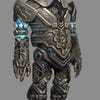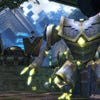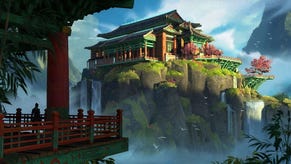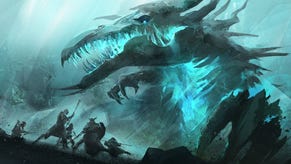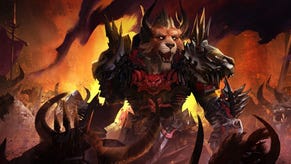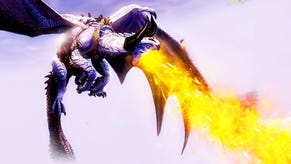Guild Wars 2
PVP tested and dungeons discussed.
Guild Wars 2 was a major draw at this year's Eurogamer Expo, and yesterday we named it as our Editors' Game of the Show. Below, John Bedford tries out player-versus-player and discusses it with lead content designer Colin Johanson; on page 3, Robert Purchese interviews Johanson about dungeons, the endgame and Guild Wars 2's distinctive dynamic events.
The PVP zone of Guild Wars 2 on display at this year's Expo was the Battle of Kyhlo. It's a war game that sees players competing against an opposing team to secure three capture points on a devastated rural map: the Mansion, Windmill and Clocktower. As each team races to secure the 500 points necessary for victory, players can make use of a trebuchet - itself destructible - to destroy buildings and expose the capture areas, dealing extraordinary damage to those taking control of the map.
The capture-point mechanic is a staple of MMO battlegrounds and will feature in every one of Guild Wars 2's PVP maps. Johanson explains that variety will stem from the dynamic components of each match rather than the game rules. "That map had the trebuchet and the destructible environment. That was the secondary mechanic for that one. One of the other maps we're talking about has a giant dragon that flies over the map, breathing fire all over the place, doing damage. They'll all be capture point maps, but with different things that make each of them memorable."
Of the classes we try, the mage feels the most robustly developed at this stage, with a tactical assortment of single-target offensive, area-of-effect damage and healing skills. It has four banks of elemental spells that you can switch between: fire (directly offensive), wind (buffs and situational abilities), earth (debuffs and crowd control) and water (healing).
A delicate class, the mage requires tactical awareness and nimble fingers. Or - in the case of Eurogamer's Robert Purchese - finding the button for the Elite skill that transforms the mage into a whirling hurricane, knocking other players back, and spamming it with a gleeful look on his face.
"We kind of threw most of the Guild Wars 1 PVP stuff out of the window."
Colin Johanson, lead content designer, Guild Wars 2
The Necromancer, meanwhile, has incredible staying power and an Elite skill that turns him into a Lich, making the class tough enough to be accomplished at single-handed base defence for a limited time. Other skills across its two weapon-set banks included spell traps, health drains and the ability to turn into a shadowy mist with unique abilities. Warriors, too, change their skill sets according to which weapons they have equipped, and make superb base defenders.
At the beginning of each round, a voice tells you to "prepare your strategy". Not many teams at the Expo had one, but the points system clearly rewards tactical play rather than killing sprees - it's possible to top the leaderboard through legwork and base defence rather than hunting.
With so many abilities available and no straight tank/healer/damage split, there's a mouth-watering range of synergies between the classes, and it's clear that Guild Wars 2 is no one-hotkey-rotation-fits-all affair. It's very immediate and physical, too: characters fly through the air, get crippled, burnt, drained, knocked down and immobilised.
So how do you go about balancing this chaos? How do you draw players into a competitive environment and ensure that they don't become dominated by a select few, the hardest of the hardcore, on any individual server?
"We kind of threw most of the Guild Wars 1 PVP stuff out of the window," Johanson says. "The core PVP system in Guild Wars 1 was the guild-vs-guild battles; these don't exist in Guild Wars 2 at all. The reason we did that is we found a small, very dedicated group of players were really into PVP and they not only dominated - no-one else played.
"It was too complicated, it was too overwhelming. It wasn't approachable and we were very honest about looking at the mistakes that we made in the first game. We also looked at other games that are out there, seeing the stuff that they'd done and looking at what we could build in.
"We want Guild Wars 2 to be a game like Halo or a COD: you turn it on, look at a list of games, then you get in and you play. It's all very easy to understand, and that's what we've built."


